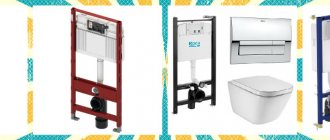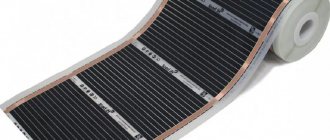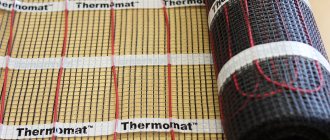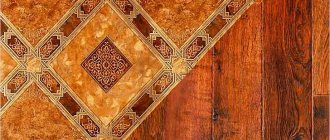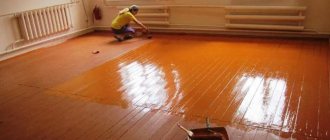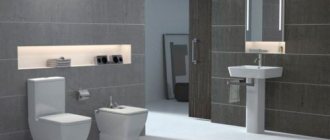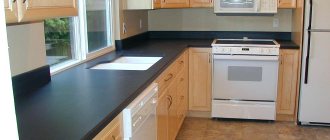Duct air conditioners are not as widespread as conventional air conditioners, and probably eight out of ten people will firmly say that this is a device for cooling the air. But in reality, the air conditioning system is designed to maintain certain microclimate standards in the building. Translated from the English word “conditions”, this word means condition or condition.
It is generally accepted that the main function of products of this type is air cooling. This air conditioner allows you to use all the advantages of air conditioning, in other words, to have complete control over the microclimate of the air mass in your home.
What is a ducted air conditioner
A duct air conditioner is a device for moving outside air through air ducts. It can be used for one room of different sizes or several rooms at once. All duct-type air conditioners, consisting of external and internal elements, are connected to each other by refrigerant pipes and electrical cables.
The indoor unit has a simple design and, usually, it and the air ducts with cables have to be hidden behind the cladding.
Decoration
White conditioner has been a tradition for many years. Manufacturers continue to base their range on this color, but in the interior it becomes an obstacle. A simple and reliable option is decoration. Its use does not require professional skills, since a person chooses decor based on his own wishes. An interesting way was to use living indoor plants. Their branches and leaves are located on the top of the indoor unit, successfully hiding it. This is allowed by design, so the functionality is preserved.
Bright decor and simple techniques will make the air conditioner an attractive part of the interior. It will no longer be “conspicuous”, becoming just one of the details of the space. After which the room will turn into a whole picture, intriguing with its own beauty
Accordingly, a person will not have to give up comfortable coolness, so important on hot summer days
Design elements
The external unit contains all the main components of the refrigeration unit necessary for the smooth operation of the air conditioner. These include a compressor, throttle devices and a condenser heat exchanger with a fan to cool it.
When the atmosphere cools, a lot of moisture is formed and to remove it, a drain pump is installed in some models. Cold air is sucked in from outside, filtered to prevent foreign particles and dust from entering, and heated.
To ensure uninterrupted operation, the external unit contains additional devices in the form of valves, an automation system, various sensors for measuring environmental readings, as well as an electronic warning system for malfunctions in the duct air conditioner.
The outdoor unit is located on the wall, in a place protected from sunlight or below on an equipped area and protected from precipitation (rain and snow). When installing a duct device, you must comply with the technical specifications recommended in the instructions, the distance between the indoor and outdoor units, and take into account their height (so that there is no difference).
A block located indoors contains a minimum number of elements. They are presented in the form of a heat exchanger and a fan in a compact housing, as well as copper tubes connecting the pipes of this housing and the air duct channels.
Through air ducts for ducted air conditioners, the air flow is forced by a fan into the indoor unit and distributed among the channels. The housing, depending on the model, may also contain several sensors, a thermometer and an alarm.
Is it possible to hang an air conditioner in the bedroom above the bed or is it better on the side?
The air conditioner in any room must be hung so that the flow of cool air does not blow directly on people. Everyone knows how dangerous an ordinary draft is. Five minutes of breeze from the window can put you to bed with a cold for two weeks. In fact, the air from the air conditioner is the same draft, only controlled.
Neglecting this rule is especially dangerous in the bedroom. They didn’t cover their back, and by the morning they got full-blown sciatica. Therefore, placing the air conditioner above the bed or opposite it is the most dangerous. It’s best to do it on the side and so that the air flow goes past the bed. It is advisable that the air conditioner have a “night mode”, as, for example, in the Electrolux EACS-12HC/N3 Crystal Style model.
Principle of operation
The operation of a duct air conditioner is no different from the operation of any others in this series. In a closed circuit there is a special gas (refrigerant), a compressor and a heat pump. The compressor forces the gas to move around the circuit. The movement of warm air occurs due to sequential compression and expansion of gas.
Air compression occurs in the external radiator of the system, as a result of which its temperature rises sharply. Due to the temperature difference, heat exchange occurs between the external cold air mass and the hot air space from the radiator, and to make the process more intense, an air flow from the fan is supplied to the external radiator.
The pressure in the radiator increases due to a throttle installed at the outlet - a special device that is capable of passing a measured air stream. Therefore, air gradually accumulates in front of the throttle and is forced to compress.
Option for installing a ducted air conditioner
A capillary tube is used as a throttle and it is selected to such a length that the gas turns into condensate (liquid) upon cooling. At the same time, it generates a lot of heat, and accordingly, the role of the heat pump increases significantly.
Through the throttle tube, gas gradually seeps into the radiator, which is located indoors. The atmospheric pressure here is low, and therefore the liquid is converted back into gas. Of course, it would be more correct to call the internal radiator an evaporator.
It turns out that a small volume of gas fills the entire capacity of the evaporator, that is, it expands. In this regard, the gas cools down and is immediately heated by the air pumped by the fan inside the room.
When heated, the gas begins to move and ends up in the compressor, which again pumps it into the external radiator and then the cycle repeats again.
Is it necessary to obtain the consent of other residents?
It is worth paying attention to the fact that the installation of equipment falls under the clauses of the Civil Code and the Housing Code, which state that any change to the facade of a residential building must be agreed upon with all its residents. It is recommended to carry out this procedure, since in the event of any violations, the court usually takes into account the lack of consent of other residents as a basis for requiring the dismantling of the air conditioner
Typically, civil rights violations can be expressed as follows:
- The device makes loud noise and vibrates during operation, which disturbs other people.
- The equipment is installed in such a way that it extends into the area of neighboring windows and partially blocks the view from the window for other residents, drops from the air conditioner constantly fall into the window in large quantities, the drainage system is installed in such a way that condensation flows out of it onto the windows of neighboring apartments, which leads to danger gradual destruction of the walls.
- Other violations that in any way infringe on civil rights, violate fire safety regulations, create a risk of short circuits, or other problems.
Thus, it is better to coordinate the installation of the air conditioner with other residents, so as not to be faced with a sudden summons to court.
Classification
Split systems are divided by power and the pressure created in the air ducts.
Duct low pressure air conditioners
Such duct air conditioners have a static air pressure of up to 40 Pa, and the best option for installing such a device would be to mount it behind the facing panels of the hallway of a hotel room.
These air conditioners are also used in offices and domestic premises. The air mass for condensation is taken from the hallway or corridor, and in such devices the mixing of air from the street is not taken into account.
Medium pressure air conditioners
These devices have a static pressure of up to 100 Pa, they can take air through air ducts and from the bottom of the case through a panel with a decorated grille.
Such devices are equipped with pumps to remove condensate that accumulates during operation. Air conditioners provide for the supply of external air, which allows for full use of the circulation and air conditioning functions.
High-pressure duct air conditioners
Such air conditioners are designed to create a microclimate in the halls of restaurants, supermarkets, offices and a number of other similar establishments.
They have a static pressure of up to 250 Pa, and this allows the use of such ducted air conditioning devices not only in one room, but also in several rooms. In this case, intake and supply occurs through a network of air ducts.
Installation in a 1-room apartment
In small apartments, the most heated room at any time is the kitchen. If you want to achieve maximum cooling, install climate control equipment here! Some people, when deciding where it is best to install an air conditioner in a one-room apartment, choose the hallway - so that the device cools the kitchen and living room at once. Usually this decision is wrong, since the room is quite small in area and cools quickly, so the cold flow is reflected from the walls and commands the device to turn off. At the same time, the temperature in other areas of the home will not cool sufficiently. The efficiency of the equipment in this case will be minimal.
If you want to achieve an optimal microclimate in a 1-room apartment, it is better to buy 2 low-power air conditioners to install in the kitchen and living room. So, get a good result and can enjoy coolness throughout the house.
Installation features
Installation of duct air conditioners is carried out sequentially, starting with the outdoor unit. Depending on the fasteners, the device can be mounted on wall brackets with a bolted connection. They are also installed on a specially made platform made of profile material.
The internal and external blocks for moving refrigerant in liquid and gaseous states are connected to each other by copper tubes, which are laid in heat-insulating sleeves. It is understood that for laying communication pipes and cables, appropriate holes are first made in the wall.
Installation of such split systems requires in addition the installation of the unit inside and the installation of air ducts of considerable length to ensure proper maintenance of the premises. In this case, it is necessary to take into account fire safety measures: for example, in industrial premises where there may be a fire, only galvanized products are used as air ducts.
The diameter of such pipes is selected based on the characteristics of the equipment and the size of the room. The main difficulty when installing a duct air conditioner is the installation of air ducts according to the developed scheme, taking into account the direction and movement of air. As a rule, they are laid along the ceiling and require 15 to 25 cm of ceiling space for placement.
For this reason, such air ducts are installed in buildings with high ceilings, and indoor units are installed in utility rooms where the ceiling height is not important. And it is provided with open access for maintenance by technical personnel. In apartments, duct-type air conditioners are rarely used due to relatively low ceilings.
Stained glass film
Stained glass film is made translucent, so it only partially protects from curious neighbors and passersby - it does not allow you to see what exactly is happening or is in your apartment. But people moving around the rooms appear to the eye as blurry silhouettes.
Please note: stained glass film is used only if the distance between your window and the intended “spectators” is at least 3–5 meters. The fact is that, coming close to the glass, a person can easily see everything that interests him
| Advantages | Flaws |
| • Beauty - such a film will become part of the interior and can serve as a separate accent in it. • Variety of colors - There are hundreds of films on sale with patterns in different styles and with a rich range of colors. • Low price and long service life - these parameters for stained glass film are the same as for mirror film. | • Does not block ultraviolet and infrared radiation. • Half transparent. • Does not fully imitate stained glass - from a close distance it is clearly visible that this is a drawing, not a pattern made of colored glass. |
The stained glass film is fixed to the glass with water and is easily removed without leaving marks.
Application area
Most often, split systems of this type are used in rooms with large volumes, or where it is undesirable for the indoor unit to be visible.
Basically, duct air conditioners exceed the power of traditional air conditioners, and therefore are used in industrial premises, administrative buildings, conference rooms, offices and large stores.
Split systems can not only renew the atmosphere, but also ionize and humidify the air, and using the function of adding fresh air, you can ensure instant freshness and purity of the air in the room.
Our advantages:
- We work only with high-quality materials.
- Fix price. The cost of work does not change until the split system is tested.
- Free consultation. If you are in doubt which model is suitable for your home or apartment, you can order a free consultation by calling. If necessary, a specialist will travel to the address to discuss all the nuances on the spot on how to best fulfill your wishes.
- The good nature of the specialists. We focus on clients, taking into account all your wishes as much as possible within your budget.
- There are no temporary teams on staff.
- Each team undergoes advanced training courses annually.
- Cleaning. After work, our craftsmen always clean up after themselves.
- All work is guaranteed.
- Our specialists are always in touch.
Air filtration
For fine air purification I chose the Systemair FFR 200 cassette filter. I planned to use the following filter elements:
- class G3 BFR 200 Coarse. With a flow of 300 m3, the losses on the new filter are 20 Pa. Replacement is recommended at a pressure loss of 170 Pa.
- class F7 BFR 200 ePM1. With a flow of 300 m3, the losses on the new filter are 75 Pa. Replacement is recommended at a pressure loss of 250 Pa.
The latest BFR 200 ePM1 filter separates 60% of PM1 size particles (0.3 to 1 µm according to ISO 16890). And it has a very decent price of 98.00 EUR.
After a year of operation, I was puzzled by the issue of replacing the filters. I decided to look on the market to see what analogues there are.
Option 1 - buy filter material and sew the filter yourself.
- I took apart one old filter and made a pattern - sheet size 350x2000 mm.
- I ordered sheet filter material of the class For comparison, I took several different materials: NF300/1, NF400/P, NF500/PS
- Below is a photo of the material: Progressive density material. The outside is loose, the inside is very dense.
- The NF300 is very similar to what the original filter was made from. It bends easily and it is easy to sew a filter out of it.
- NF500/PS is very dense, even hard. It will not be possible to make something similar to the original out of it.
- NF400/P is just what you need
Option 2 - order the filter assembled.
- At the same time as the material, I ordered an assembled filter class according to the following specification FVK-233-233-300-4-F6/20.
The workmanship is excellent, it fits perfectly in the original FFR 200 case. I decided for myself that I would order it - this is a 2-3 times savings compared to the original.
Noise control
In my previous apartment, I already tried to assemble the supply ventilation using Soler&Palau components. Several shortcomings were identified:
- high fan noise when using standard controls, especially in the range from 0 to 50%
- low resource - about 2 years of continuous operation and they begin to hum
- low pressure - it is difficult to press the filter
In the new apartment I decided to add industrial components.
First of all, I had high noise requirements. And there are several sources in the tributary:
- fan motor noise, especially during regulation. If the regulator is a triac, then there is no escape from the noise. Either switch to a transformer regulator, or use fans with EC motors that are controlled by a 0-10 V signal.
- noise in the channels. Everything is simple here, you need to reduce the air flow speed to 1.5-2 m/s and increase the rigidity of the channels. Refuse rectangular plastic and flexible ones and switch to twisted galvanized ones.
- noise in switchgears. It is necessary, firstly, to create a static pressure zone in front of the grille and, secondly, to reduce the speed in the grille itself.
As a component manufacturer, I chose Systemair products. Excellent quality and very expensive. But in 2012 it was still quite accessible.
Video description
Video example of installation and use of a supply air conditioner:
- In solving the problem of ensuring normal ventilation in spacious rooms - living rooms, halls, gyms - column-mounted supply split systems are suitable. They are distinguished by high productivity and better distribution of flows in space.
- Power, installation location, control type and other important parameters must fully comply with specific operating conditions.
Important! When choosing an air conditioner with ventilation, you need to familiarize yourself not only with its type of device and operating principle, but also carefully study the basic technical data - power, performance, range of set operating temperature and flow rate. It is important to first make sure that the model is suitable for the place where you plan to install it.
Service
In order for the device to work properly, the following actions must be performed at certain intervals:
- Removing dirt from the condensate tray. It is also useful to check the condensate discharge tube for dirt and treat the evaporator with a disinfectant - due to the abundance of moisture and dust, bacteria, often pathogenic, like to multiply here.
- Checking the refrigerant pressure. This operation must be performed by service personnel.
Freon pressure is checked using special equipment
- Checking air ducts for dust and removing it if found.
- Cleaning the filter.
Cleaning the filter
If this is not done, the volume of air pumped through the evaporator will be significantly reduced. This will lead to the following consequences:
- the air conditioner will not be able to maintain the room temperature at the user-specified level;
- the device may fail due to overload;
- the evaporator will freeze from a lack of warm air, which is why water may leak out of the indoor unit after shutdown.
The frequency of maintenance work is indicated in the device manual.
Advantages and disadvantages
The main advantages of such equipment include:
- high performance;
- possibility of installing several evaporation units;
- reliability;
- ability to maintain temperature in several rooms.
Thanks to the installation of powerful units, duct air conditioners can provide the specified temperature parameters even over a large area. Installing additional evaporative units and connecting them to one central compressor will save money if it is necessary to include other rooms.
In addition to the positive qualities, such equipment also has its disadvantages:
- high price;
- high demands on design;
- difficulty in installation;
- high noise level if positioned incorrectly.
Channel-type equipment can cost a hefty sum. Moreover, the greater the number of blocks and the longer the shafts, the more expensive it is. Such costs pay off only if the equipment is constantly used in several rooms at the same time.
The installation process cannot be completed without the help of qualified specialists. Due to the design of duct-type air conditioners, the layout of the air ducts must be thought out in advance, taking into account all the operating parameters of the equipment.
Wall chipping
Wall chipping in concrete/monolith
Grooving walls for freon communications 70x40 cm. (concrete) M.p.1 500 Grilling a wall for drainage communications 25x25 cm. (concrete) M.p. 800 Grilling a wall for an electric cable 15x15 cm. (concrete) M.p. 500 Grilling a wall for a niche for drainage pump 150x70 cm (concrete) pcs. 600Wall chipping in brick
Grilling of walls for freon communications 70x40 (brick) M.p.1 300 Grilling of a wall for drainage communications 25x25 (brick) M.p.600 Grilling of a wall for an electric cable 15x15 cm (brick) M.p.500 Grilling of a wall for a niche for a drainage pump 150x70 cm (brick) pcs. 500Wall chipping in foam block/aerated concrete
Grilling of walls for freon communications 70x40 (aerated concrete) M.p.900 Grilling of a wall for drainage communications 25x25 (aerated concrete) M.p.500 Grilling of a wall for an electric cable 15x15 cm (aerated concrete) M.p.300 Grilling of a wall for a niche for a drainage pump 150x70 cm (aerated concrete) pcs. 400Holes in the wall
Additional drill hole Ø 50 mm in the wall up to 120 cm.Pcs. 700 Additional drill hole Ø 50 mm in the wall up to 100 cm.Pcs. 500 Additional drill hole Ø 50 mm in the wall up to 30 cm.Piece 400Air duct calculation
The calculation of a ducted air conditioning system is quite complex and should only be entrusted to qualified specialists. In short, the procedure looks like this:
- For each room, a thermal calculation is made, on the basis of which the required refrigeration capacity is determined.
- The cooling capacity determines the approximate volume of cooled air that the air conditioner should supply to a given room. For models with a cooling capacity of up to 20 kW, approximately 165 cubic meters of air must be supplied to provide 1 kW of air. m/h, for more powerful ones (up to 40 kW) this figure is about 135 cubic meters. m/h.
Knowing the diameter of the air ducts, the material and the speed of air movement (it depends on the supply volume), the aerodynamic resistance of each branch and the entire system as a whole is determined.





